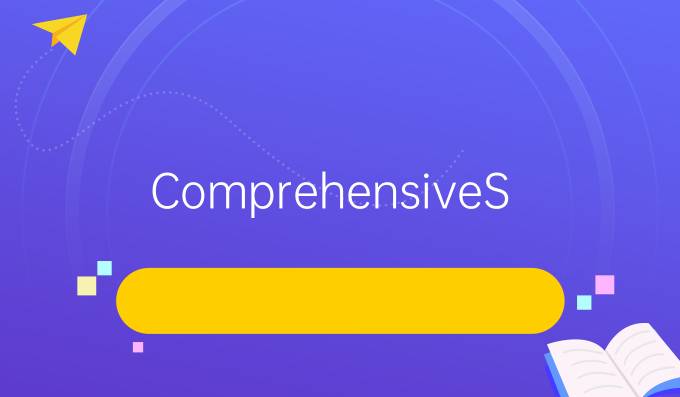
4007-702-802
Follow us on:



本文来源:ManLang 发布时间:2024-08-08 分享:

Abstra: In the everevolving landscape of digital marketing, search engine optimization (SEO) remains crucial for the success of any website. This article presents a comprehensive guide to SEO strategies that encompass various aspes of website optimization. It will explore four fundamental areas: keyword research, onpage optimization, technical SEO, and offpage SEO. Each seion provides detailed steps and aionable tips that can help elevate your website's search engine rankings. By the end of this guide, you'll have a clear understanding of how to implement these strategies effeively and holistically optimize your website to enhance visibility, traffic, and overall performance.
Keyword research is the foundation of any successful SEO strategy. It involves identifying the search terms and phrases that potential customers use to find produs, services, or information relevant to your business. Understanding these keywords allows you to tailor your content to meet user intent, thereby improving visibility in search engine results.

To begin your keyword research, utilize tools such as Google Keyword Planner, SEMrush, or Ahrefs. These tools can help you discover keywords with significant search volume and manageable competition. Aim for a mix of shorttail and longtail keywords; while shorttail phrases attra general traffic, longtail keywords can target specific queries, capturing a more focused audience.
Once you've identified your target keywords, categorize them based on user intent—informational, navigational, or transaional. This categorization will guide your content creation efforts and ensure that you are addressing the specific needs and interests of your audience, ultimately driving more relevant traffic to your site.
Onpage optimization involves the adjustments made direly on your website to enhance its performance in search engines. This aspe of SEO includes elements such as content quality, meta tags, headings, and URL struure. Each of these elements plays a vital role in helping search engines understand your website's content.
First, focus on content quality. Ensure that your content is relevant, informative, and engaging to your audience. Incorporate your target keywords naturally within the text, but avoid keyword stuffing, which can lead to penalties from search engines. Additionally, use headings (H1, H2, H3) effeively to struure your content, making it easier for both users and search engines to navigate.
Next, optimize your meta tags, including the title tag and meta description. These elements should include your primary keywords and accurately describe the page content, encouraging users to click through from search results. Also, ensure that your URLs are short, descriptive, and keywordrich, enhancing both usability and crawlability.
Technical SEO pertains to the backend struure and performance of your website. It ensures that search engines can crawl and index your site efficiently. Key aspes of technical SEO include site speed, mobilefriendliness, secure conneions, and proper XML sitemaps.
Site speed is critical; slower websites provide a poor user experience and can negatively impa rankings. Utilize tools like Google PageSpeed Insights to assess your site's speed and receive aionable recommendations for improvement. Additionally, consider leveraging browser caching, image optimization, and a content delivery network (CDN) to enhance performance.
Mobilefriendliness is another essential faor, especially with the increasing use of mobile devices for internet browsing. Implement a responsive design that adjusts seamlessly to different screen sizes. Furthermore, ensure your site is secured using HTTPS, which encrypts user data and builds trust with visitors.
Offpage SEO encompasses all aivities that occur outside your website but impa your search rankings. This aspe primarily revolves around link building, social media engagement, and brand mentions. Highquality backlinks from reputable sources signal to search engines that your site is authoritative and valuable.
Focus on developing a diverse backlink profile by creating shareable content, guest blogging on industryrelated sites, and reaching out for partnerships or collaborations. Utilize tools like Moz's Link Explorer or Ahrefs to analyze your backlink profile and identify opportunities for improvement.
Social media engagement also plays a role in offpage SEO. Sharing your content across various platforms can drive traffic and potentially earn backlinks from other websites. Build a strong presence on social media to cultivate community and interaion around your brand, which can amplify your reach and improve visibility.
Summary: In conclusion, a comprehensive approach to SEO involves a combination of effeive keyword research, meticulous onpage optimization, robust technical SEO praices, and strategic offpage efforts. By following the steps outlined in this guide, you can optimize your website holistically and improve its performance in search engine rankings. This will not only increase traffic to your site but also enhance user experience and engagement, ultimately leading to greater business success in the digital landscape.
猜您感兴趣的内容
Unlocking Engagement: The Ultimate Guide to Content Marketing Software for Business Growth
2025-04-16Advanced Strategies for Enhancing SEM Network Optimization: Leveraging Data-Driven Insights and AI T
2025-04-16Mastering SEO Query Optimization: Strategies to Enhance Your Websites Visibility and Performance
2025-04-16Mastering SEO: Strategies for Optimizing Your Websites Ranking and Boosting Online Visibility
2025-04-16Unlocking Success: Essential Strategies for Effeive SEM Website Optimization
2025-04-16Key Elements of Content Marketing: A Comprehensive Guide to Strategies and Best Praices for Success
2025-04-16Unlock Your Business Potential: Comprehensive SEM Account Management Services for Optimal Performanc
2025-04-16Maximizing Engagement: A Comprehensive Produ Content Marketing Strategy for Enhanced Brand Visibilit
2025-04-16您也许还感兴趣的内容
Optimizing Baidu SEM Bidding Strategies for Enhanced Online Visibility and ROI
2025-01-30Boosting Brand Engagement: A Strategic Guide to Weibo Content Marketing
2025-02-01Strategic Video Content Marketing: Maximizing Engagement and Impa
2024-07-22Streamlining Content Marketing: Introducing the All-in-One Platform
2024-03-26Optimizing SEM Hosting: Unleashing Efficiency for Enhanced Performance
2024-03-28Content Marketing Seminar: Elevating Your Strategy and Execution
2024-05-20Unlocking Success: Innovative Strategies for Promoting Outsourcing Website Services
2024-12-15Maximizing Impa: Innovative Strategies for Effeive Content Marketing Campaigns
2024-05-29